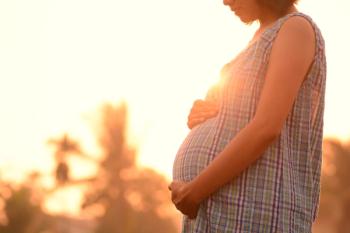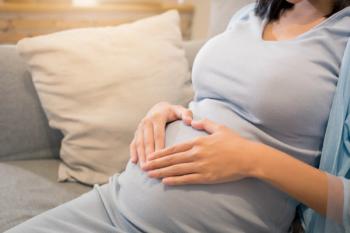
Late pregnancy sleep position and birthweight
Risk of stillbirth is known to be elevated in women who go to sleep supine late in pregnancy, but a new study suggests that may not be the only associated risk.
Risk of stillbirth is known to be elevated in women who go to sleep supine late in pregnancy. A new study suggests that doing so also may be associated with lower birth weight in offspring.
Published in
The primary outcome examined by the investigators was adjusted mean difference (aMD) in birth weight. They also assessed birth weight centiles and adjusted odds ratios (aORs) for birth weight < 50thand < 10th centile (small for gestational age [SGA]) for supine vs. non-supine going-to-sleep position in the last 1 to 4 weeks, adjusted for variables known to be associated with birth size.
The authors calculated the centiles for the population according to INTERGROWTH-21ST and customized centiles. INTERGROWTH-21st centiles are a birth standard derived from a low-risk birth cohort and adjusted for gestation at birth and infant sex. The customized birth centiles, based on a fetal growth standard, also are adjusted for gestation at birth and infant sex as well as other variables.
Have you read:
A woman’s going-to-sleep position was defined as her usual position over the previous week, 2 weeks or month and varied by study. Position as recorded as left or right side, supine and other. Supine was compared with non-supine in the main analysis and all four positions were assessed in the secondary analysis.
The researchers compared infant birth weight and birth weight centiles by maternal going-to-sleep position. Adjustments were made to gestational age at birth, infant sex, maternal age, and other factors such as preexisting diabetes and hypertension. Multivariable analyses also were adjusted for individual studies as a covariate.
Of the 1760 women in the studies, 3.2% said they usually slept supine in the previous 1 to 4 weeks. Adjusted mean (SE) birth weight was 3410 (112) g in women who reported the supine position and 3554 (98) g in women who slept non-supine (aMD, 144 g; 95% confidence interval [CI] -253 to -36g; P= .009). That equated to a 10-percentile reduction in adjusted mean INTERGROWTH-21stand customized centiles. Going to sleep supine also was associated with a three-fold increase in SGA by INTERGROWTH-21ststandards (aOR, 3.23; 95% CI, 1.37-7.59) and a nonsignificant increase in SGA customized standards.
The authors noted that supine maternal position is associated with a reduction in maternal cardiac output and subsequent fetal blood supply, so, “it is biologically plausible that supine maternal going-to-sleep position could contribute to reduced birth size. Our finding of an independent mean reduction in birth weight associated with supine going-to-sleep position is clinically relevant.” They said that theirs is the first study to identify an association between supine maternal sleep position and lower birth weight in women with ongoing pregnancies in a high-income setting.
Newsletter
Get the latest clinical updates, case studies, and expert commentary in obstetric and gynecologic care. Sign up now to stay informed.










